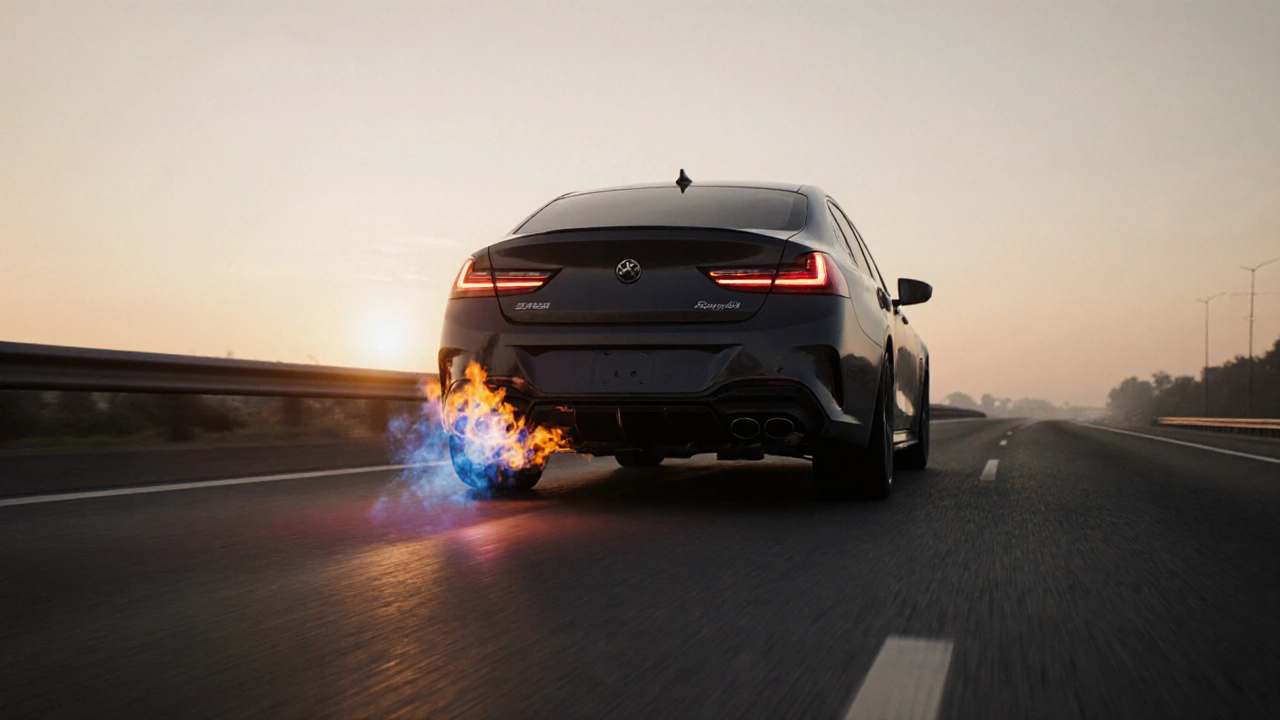When dealing with exhaust fire risk, the chance that flames or excessive heat ignite parts of a vehicle’s exhaust setup. Also known as exhaust fire danger, it becomes a real concern whenever the exhaust system is modified, poorly maintained, or exposed to fuel leaks. Exhaust fire risk is not just a theoretical problem – it shows up in workshop reports, insurance claims, and on‑track incidents. Understanding the core elements that drive this risk helps you keep your ride safe while still enjoying performance upgrades.
The first piece of the puzzle is the exhaust system, the network of headers, pipes, mufflers and catalytic converters that route engine gases away from the cabin. A well‑designed system moves hot gases efficiently, but when you swap in a larger diameter pipe or a straight‑through muffler, you may alter temperature distribution. That alteration often forces heat into areas that lack proper protection, creating a direct link: exhaust fire risk encompasses exhaust system changes. The second key component is the heat shield, metal or ceramic barriers that divert heat away from vulnerable components. If a shield is missing, bent, or made from low‑grade material, the heat can reach fuel lines, brake lines, or the under‑carriage, and the chain reaction begins: exhaust fire risk requires effective heat shielding. Finally, consider the fuel leak, any unintended escape of gasoline or diesel from the fuel delivery system. A tiny drip on a hot pipe can ignite instantly, so fuel leak influences exhaust fire risk. Together, these entities form a safety triangle that every modifier should respect.
Performance exhausts are a favorite upgrade because they promise louder tones and a few extra horsepower. Brands like MagnaFlow or custom‑fabricated stainless steel pipes are popular, but they also raise the temperature of the pipe wall, especially near the manifold. When you install a performance exhaust, any aftermarket system designed for higher flow and sound, the heat output can climb 50 °C or more compared to stock. That extra heat makes the surrounding heat shields work harder and can expose cracks in older fuel lines. The relationship is clear: performance exhaust influences exhaust fire risk by increasing heat load. To mitigate, many shops add ceramic coating or upgraded shields, a step that directly reduces the chance of ignition.
Another frequent change is short‑throw downpipes on turbocharged cars. These pipes often eliminate the catalytic converter, removing a key heat‑absorbing component. The result is a hotter exhaust tailpipe, which can melt nearby plastic clips or cause the rear bumper to warp. In a worst‑case scenario, a small fuel spill on the hot metal triggers a flame that spreads to the fuel tank. The lesson here is that any modification that removes or bypasses heat‑absorbing parts pushes the risk higher, unless you replace them with equivalent heat‑dissipating solutions.
Even routine maintenance mistakes can spark trouble. Forgetting to tighten a fuel injector connector, using the wrong type of hose, or neglecting to replace a cracked fuel line after a crash all create potential leak points. When those leaks meet an exhaust pipe that runs just a few inches away, the fire can start in seconds. That is why professional installers always check for proper clearances and use heat‑resistant hose clamps. By keeping the fuel system airtight and well‑routed, you satisfy the predicate: exhaust fire risk requires solid fuel system integrity.
So what can you do right now? First, inspect your heat shields for rust, dents, or missing sections. Second, look at the area where the exhaust exits the under‑carriage – any soot buildup or melted paint signals excess heat. Third, pressurize the fuel system with a leak‑detecting fluid and watch for bubbles near hot spots. Fourth, if you’ve installed a performance exhaust, ask the shop whether they added a ceramic coating or upgraded the heat shield. Finally, keep a high‑temperature fire extinguisher in the trunk; it’s cheap insurance against an unexpected flare‑up.
All of these steps weave together a practical safety net. Below you’ll find a curated set of articles that dive deeper into each of these areas – from choosing the right heat shield material to spotting early signs of fuel leaks, and from understanding how different exhaust designs affect fire risk to best‑practice installation tips. Whether you’re a weekend tinkerer or a seasoned track driver, the collection equips you with the facts you need to keep the flames where they belong: on the road, not under your car.

Learn what causes exhaust flames, the safety risks involved, and how to prevent them. Get practical tips, legal info, and a FAQ to keep your car safe and road‑legal.